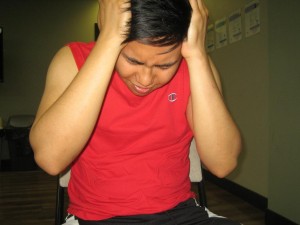Even though many individuals enjoy the sunny and warm weather, it can also be a potential trigger for headaches. The throbbing sensation in the temples can be triggered by changes in the humidity and temperature. Nevertheless, a sore headache can also indicate a heat-related illness. It is important that you know what to do in order to cool down and provide relief to a pounding headache in order to prevent serious complications from developing.
What are the causes of headaches?
A primary headache is caused by an underlying medical condition in which the nerves and blood vessels in the head react to the chemical activity in the brain. Primary headaches such as tension headaches, cluster headaches and migraines can be triggered by various factors related to the lifestyle of the individual including lack of sleep, consumption of alcohol and even exposure to heat.

During the hot and humid months, some individuals can suffer from headaches frequently. Based on a study conducted, individuals who experienced chronic headaches or migraines were not able to enjoy outdoor activities due to the changes in the temperature, storms, wind and altitude. Other contributing factors include changes in the diet, exposure to bright sunlight and using scented sunscreen.
Heat exhaustion
Headache is a symptom of heat exhaustion which is instigated by a combination of hot temperature, overexertion and high humidity. The pounding headache can be accompanied by rapid pulse rate, muscle cramps, fatigue, nausea or vomiting and cool, clammy skin. Always bear in mind that dehydration plays a big role in this condition. Once the individual is overheated, he/she cannot sweat enough in order to keep the body temperature cool. If you suspect that the individual is experiencing heat exhaustion, you have to instruct him/her to stop the activity and transfer to a shaded area and provide plenty of fluids to drink. Timely delivery of first aid care is vital so that the condition of the individual will not worsen.
Heat stroke
A severe, pounding headache is an indication of a heat stroke which is a dangerous heat-related condition. Heat stroke develops once the body could no longer cool itself naturally. The temperature of the body can go up to 106 degree F or even higher in just a few minutes. The other symptoms to watch out for include hot and dry skin, dizziness, rapid pulse rate, confusion, nausea or vomiting and loss of consciousness. Always remember that heat stroke can lead to permanent damage and even death.
What you have to do
If the individual experiences a headache while outside and the temperature is high, you have to encourage the individual to go inside an air-conditioned room or move to a place that shady. By enrolling in a first aid class, you will how to properly manage heat-related conditions.
Allow the individual to lie on his/her back with the legs propped up so that they are above the heart. Provide the individual with plenty of liquids to drink. Do not provide caffeinated and alcoholic beverages since these can lead to dehydration. Instruct the individual to take a cool shower or soak in a cool tub if possible. You should also remove extra clothing if the individual is overly dressed. The symptoms must subside in an hour. If they persist, it is important to seek medical care.
